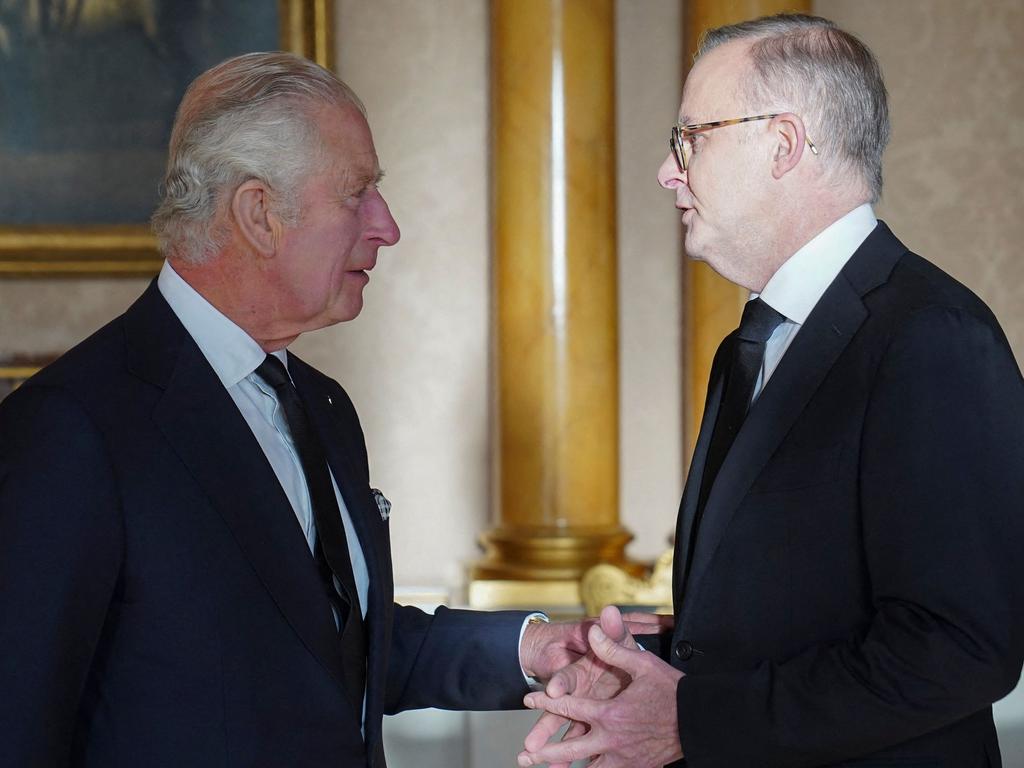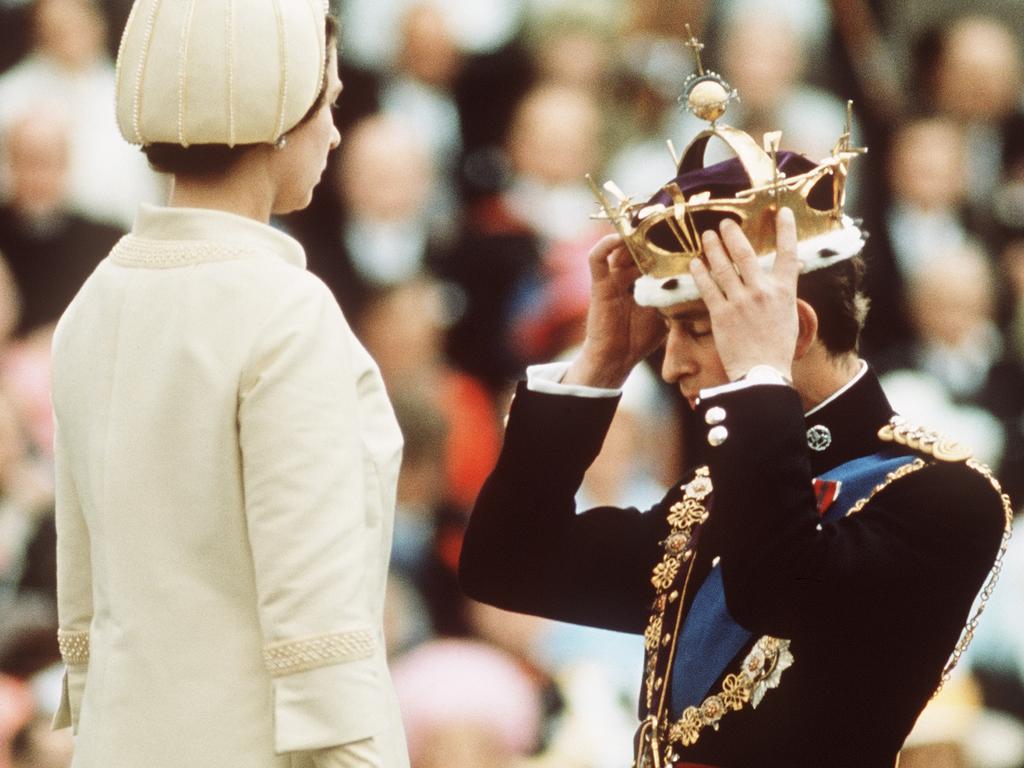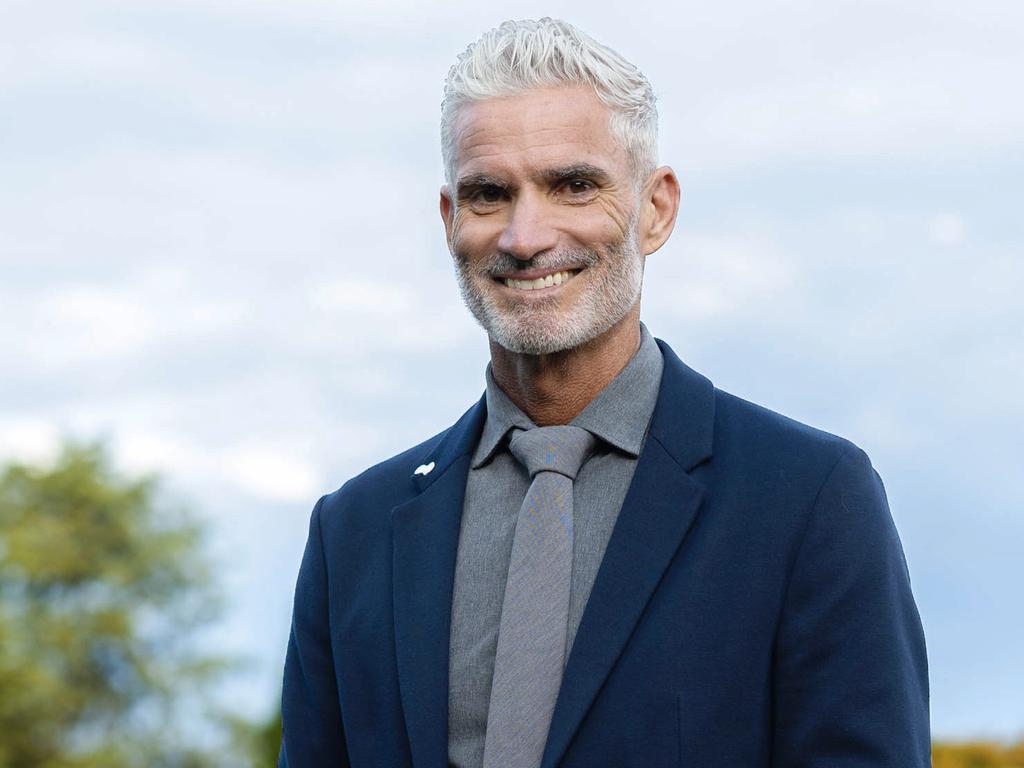Voracious appetite for work, but not lunch: How King Charles stays fit
What does it take to be king at an age when most contemporaries are winding down to ease into a stress-free retirement? Inside the King’s strict daily regimen.

So what does it take to be king at an age when most contemporaries are winding down to ease into a quiet and stress-free retirement? Poring over parliamentary papers in the red box in his study each morning, hosting and meeting dignitaries, conducting the openings of village halls and overseeing charity events, Charles needs energy, and lots of it. Even for his coronation on May 6 he will need strength – the robes he will wear weigh as much as 7kg and the solid-gold St Edwards crown is a head-crushing 2.23kg.

It is easy to credit the aides, equerries and cooks who can make Charles’s life ahead as a monarch much easier, but the King has insisted on a strict personal discipline that has held him in strong stead. He is an admitted workaholic – his voracious appetite for letter-writing when he was Prince of Wales to impress upon decision-makers the importance of the environment, green issues, pleasing architecture, and meaningful work and opportunities for young people is legendary.
Even now, when he has to be careful about interfering too much in politics, his workload has not diminished, and he starts working shortly after a breakfast of fresh fruits and nuts and seeds.
In Tina Brown’s book The Palace Papers, she recounts how Prince William stopped a guest at Charles’s country house, Highgrove, from lifting a tureen lid of a container containing linseed.
Brown wrote: “Prince William said: ‘Oh no, don’t go near the bird table, Stephen, that’s only for Pa’.”

After breakfast Charles listens to the morning radio bulletins and then begins his working day, not stopping for lunch, and taking a break only at 5pm on the dot.
A former private secretary, Julian Payne, once divulged: “The King doesn’t eat lunch, so an early lesson I learnt when out on the road with him was to have a big breakfast or bring a few snack bars with you to keep you going.” He added: “The working day is pretty relentless.” Even 70 “fun facts” detailed by Buckingham Palace to celebrate the then Prince of Wales’ 70th birthday confirmed the detail that he doesn’t eat lunch.
A former royal correspondent, Gordon Rayner, said Charles regarded lunch as an impediment to getting things done.
Others say he will sometimes take a break from dealing with correspondence, not to eat but to go on a brisk walk for fresh air. But come 5pm there is a break for a pot of tea, made using one teaspoon of leaves for each cup of tea, plus one for the pot. If it is green tea the temperature is 70C, but Earl Grey tea is made with water at boiling point of 100C. Organic honey is often added to the pot. Charles will meet up with Queen Camilla at this time and the tea is accompanied by sandwiches and some fruit cake, and any leftovers are re-presented the next day.


Dinner is at 8.30pm and then around 10pm he heads back to his desk to finish up paperwork until well after midnight – a schedule that fits in well for when he has official banquets or premieres to attend.
Charles told the BBC two years ago: “For years I haven’t eaten meat and fish on two days a week and I don’t eat dairy products on one day a week.” A cook travels with him to ensure his meals are light and healthy, and also to protect against food poisoning.
Former royal butler Grant Harrold said eating seafood on overseas tours was restricted.
“We don’t want a member of the royal family having a serious reaction to food poisoning, especially if they’re on an overseas tour.”
But Charles does like a wee dram and so it is no surprise his Highgrove estate has just released an “exceptional” single-malt Coronation Whisky.
However, his regular drink of choice is a very dry martini, palace insiders say.
On tours where Charles is on his feet for all of the day, it is his fitness level – perhaps a genetic nod to his father Prince Philip’s legendary stamina and competitive nous in sport – that is impressive. Being physically active and loving the outdoors have been constants in his life.

Camilla wrote in Country Life last year of Charles: “Whether he’s hedge laying in the pouring rain, striding, like a mountain goat up impossibly steep Highland hills, planting trees in the arboretum or pruning at Highgrove, this is where he finds true peace.”
Charles has long played polo, resulting in some lower back injuries, and he is a particularly strong skier. He continues to head to a mountain most seasons, most recently taking to cross-country skiing with Camilla.
In 1988 Charles narrowly escaped serious injury, or worse, when an avalanche swept down the steep face of the Gotschnagrat Mountain in Klosters, catching his skiing party who had been standing to the side of the piste discussing their next run. Charles, who dug with his bare hands in the snow trying to help others, was deeply distraught that the former equerry to the queen, Major Hugh Lindsay, 34, was killed, and friend Patti Palmer-Tomkinson suffered leg and lung injuries.
For decades he has done the Canadian Air Force 5BX list of 12-minute physical exercises each day, and to help alleviate the pain in his back he performs daily headstands or hanging from a bar.


Prince Harry recounted in his book Spare how Charles would do the exercises, prescribed by his physiotherapist, in a pair of boxers.
In 1966 when the queen and Prince Philip sent a very shy Charles, then just 17, for two terms (costing $406 a term) to Geelong Grammar School’s Timbertop near Mansfield, he undertook intense physical demands – treks to Mount Stirling to see the snow; overnight hikes and camping in the acres of rugged bushland (including one time when he was hiking in a blood-soaked shirt), regular cross-country running, and carting of wood – without complaint. “I loved it all,” he said at the time, and it was the beginning of a love affair with the country.
Yet it was the social aspect of that uncomplicated time Charles often recalls with a particular fondness. In 2011 he told an Australian audience at Australia House in the Strand: “I’ve been through my fair share of being called a ‘pommie bastard’, by god it was good for the character. If you want to develop character, go to Australia.”
A half-century on, Charles outpaces his country guests and VIPs during the “leisurely strolls” on the hills and moors when he relaxes at the Balmoral estate in Scotland. One palace aide tells Inquirer staff members joke about the “stroll”, which is a fast-paced, lung-gasping hike, and some pre-warned guests even undertake a fitness regime at the gym before heading up.
Camilla has often commented that Charles “is the fittest man of his age I know”. She told BBC: “He’ll walk and walk and walk. He’s like a mountain goat, he leaves everybody miles behind.”








King Charles III has a strict daily regimen to keep his weight in check and his fitness levels high. At 74 – he was 73 when his mother, Queen Elizabeth II, died last September and he inherited the throne – Charles has taken on the role he has waited and prepared for his entire life.